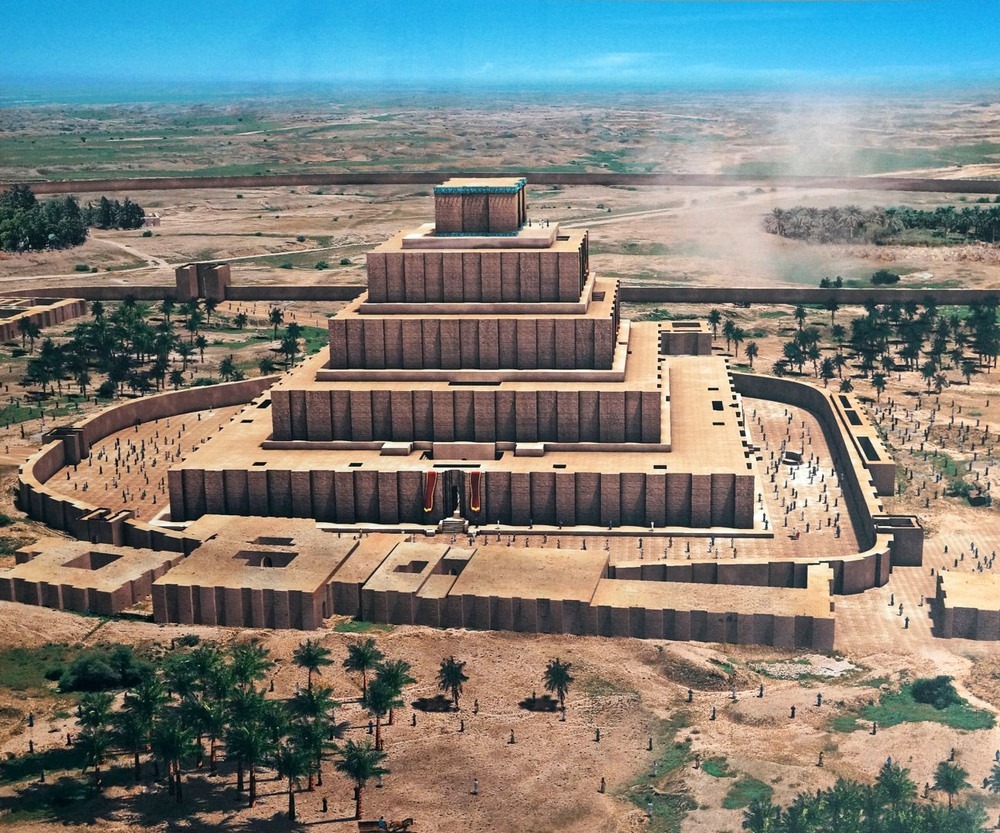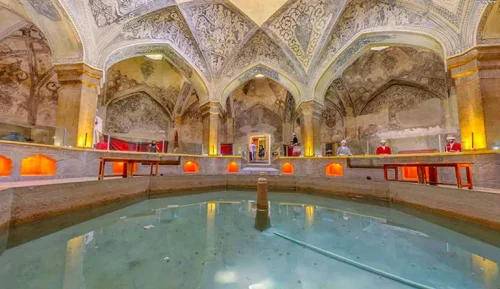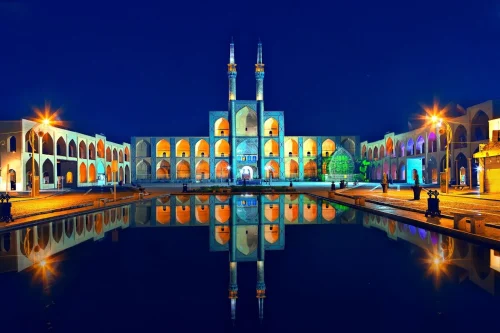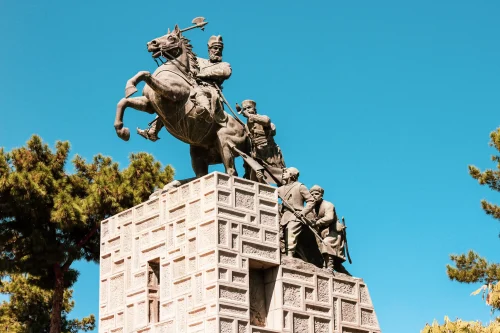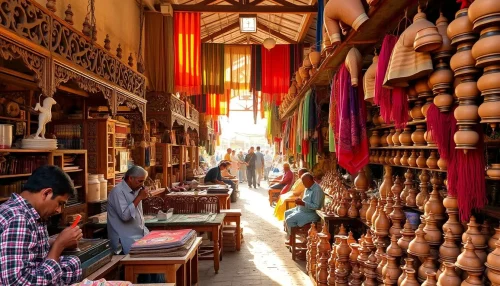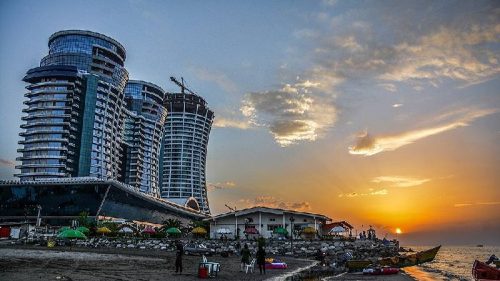Chogha Zanbil Shush | Mystical and Ancient Ziggurat City
Chogha Zanbil Ziggurat Shush, one of the most important ancient structures in Iran, is located in the city of Shush. This ziggurat, with its magnificent architecture and long history, is a symbol of ancient Iranian culture and civilization.
Mystical city of Shush, due to the presence of Chogha Zanbil Ziggurat, the Tomb of Daniel, and other archaeological sites, is considered one of the major tourist destinations in Iran.
Ancient Ziggurat of Shush, with beautiful decorations and ancient engravings, contains valuable information about Iran’s civilization.
For more information about Chogha Zanbil Ziggurat Shush or to purchase tickets, visit the Iran Charter website. You can also contact the Iran Charter support team at 02191091190.
History of Chogha Zanbil Shush | The Beginning of Elamite Civilization
Chogha Zanbil Shush, one of the most prominent archaeological sites in Iran, stands as a symbol of Elamite civilization in historical records. This massive ziggurat was built approximately 1250 years before Christ by the Elamite king, Untash-Napirisha. The intricate and unique structure of Chogha Zanbil demonstrates the advanced architectural and engineering skills of the Elamite people of its time. This monument was not only a place of worship for ancient Elamite gods, but it also represented the power and grandeur of the Elamite Empire. Given its geographic location in the Khuzestan province, Chogha Zanbil was recognized as a major cultural and religious center in the region and played a key role in the development of western civilizations of Iran.
Architecture of Chogha Zanbil Ziggurat | An Ancient Engineering Masterpiece
The Chogha Zanbil Ziggurat, initially 53 meters high, reduced to about 25 meters over two levels, is one of the world’s most distinguished examples of ziggurat architecture. This structure is made of mud bricks and baked bricks, with its walls decorated with glazed bricks. The designers of Chogha Zanbil utilized an advanced water drainage system that adeptly managed water supply to the structure. Multiple staircases and arched vaults display the artistry and high precision of its builders. Additionally, the presence of bull and guardian lion statues at the ziggurat’s entrances adds not only artistic appeal but also symbolizes the strength and protection of this monumental building.
Discovery and Archaeological Excavations at Chogha Zanbil Shush
The discovery of Chogha Zanbil Shush was first unwittingly made by the workforce of the Anglo-Iranian Oil Company in 1939 AD. This discovery quickly captured the attention of a French archaeological team, leading to extensive studies in the area. Archaeological excavations revealed that Chogha Zanbil Ziggurat is comprised of 6,500 inscribed bricks, each providing valuable information about its structure, materials, and builders. The ongoing efforts of archaeologists to uncover and preserve this ancient heritage have played a significant role in the introduction and preservation of Iran’s cultural identity.
Cultural and Religious Significance of Chogha Zanbil Shush
As the main worship shrine of the Elamite civilization, the Chogha Zanbil Ziggurat played a vital role in the culture and religion of this people. The ziggurat was a place of worship for important Elamite gods such as Inshushinak and Napirisha. Religious rituals and celebratory ceremonies were held at this location, reflecting the deep connection of the Elamite people with their deities. Aside from its religious importance, Chogha Zanbil also served as a cultural hub where scholars and poets of its era gathered, significantly contributing to the expansion of Elamite knowledge and arts.
Tourist Attractions Around Chogha Zanbil Shush
The site of the Chogha Zanbil Ziggurat, located near the city of Shush, with its stunning natural landscapes and numerous historical relics, stands as one of the top tourist destinations in Khuzestan province. Visitors can explore the Tomb of Daniel, the Dez River, and the historical water structures of Shushtar. These areas offer a unique blend of history and nature, providing an unparalleled experience for tourists. Additionally, the historical forts and possible ancient ruins surrounding Chogha Zanbil offer great opportunities for history and culture enthusiasts to delve deeper into past civilizations.
Advanced Engineering Systems in Chogha Zanbil Shush
The engineering systems in the Chogha Zanbil Ziggurat signify the ingenuity and creativity of the Elamite natives in the fields of water engineering and resilient structural designs. The complex water drainage system employed in the Chogha Zanbil Ziggurat utilized underground channels and reservoirs to ensure the structure, made of brick and mud, could withstand weather conditions. These systems not only helped preserve the integrity of the ziggurat but also illustrated the Elamite people’s capability in water resource management and sustainable construction. The study of these advanced engineering systems has aided archaeologists and modern engineers in better understanding past architectural and engineering techniques.
Ceremonies and Worship in Chogha Zanbil Ziggurat Shush
Religious ceremonies at the Chogha Zanbil Ziggurat Shush played a crucial role in the everyday life of the Elamite people. These ceremonies included the worship of main Elamite gods, animal sacrifices, and religious festivals that reinforced the people’s connection to the divine foundation of their faith. Researchers, by examining ancient inscriptions, understood that these ceremonies held significance not only in a religious sense but also socially and culturally. The conduct of these ceremonies at the ziggurat reflected social order and cultural cohesion within the Elamite society.
Temples of Ancient Gods in Chogha Zanbil Shush
Within the enclosure of the Chogha Zanbil Ziggurat Shush, various temples were dedicated to the worship of the ancient Elamite gods. These temples were devoted to deities such as Inshushinak, Napirisha, and Kiririsha. Each temple was constructed with its unique architectural style and artistic decorations, symbolizing the strength and grandeur of the gods they were devoted to. The elevated structures and the high-quality materials used in these temples reflect their religious and cultural importance in Elamite society. Studying these temples has contributed to a greater understanding of Elamite gods and religious beliefs.
Important Tips for Visitors of Chogha Zanbil Shush
Visiting the Chogha Zanbil Ziggurat Shush is a unique and educational experience that requires proper planning. Visitors should be mindful of elements like weather conditions, access to the tomb area, and adherence to visiting regulations. It is recommended to use suitable footwear and refrain from littering or consuming food to help preserve the environment of this ancient site. Additionally, it’s advisable to bring water and snacks as the on-site amenities are limited. A written permit is required for professional filming and photography, which visitors should consider beforehand.
Frequently Asked Questions
- Where is the Chogha Zanbil Ziggurat located?
- The Chogha Zanbil Ziggurat is located in Khuzestan Province, near the ancient city of Shush. This monument is situated approximately 30 kilometers southeast of Shush city.
- To which civilization does the Chogha Zanbil Ziggurat belong?
- The Chogha Zanbil Ziggurat belongs to the ancient Elamite civilization. This historical monument was constructed by Inshushinak, an important Elamite goddess.
- How old is the Chogha Zanbil Ziggurat?
- The Chogha Zanbil Ziggurat was built approximately 1250 years before Christ.
- Who constructed the Chogha Zanbil Ziggurat?
- The Chogha Zanbil Ziggurat was built under the order of Untash-Napirisha, the Elamite king.
- When is the best time to visit the Chogha Zanbil Ziggurat?
- The best time to visit the Chogha Zanbil Ziggurat is during cooler seasons like autumn and spring, as Khuzestan Province’s weather is more suitable then.
- How can one reach the Chogha Zanbil Ziggurat?
- To reach the Chogha Zanbil Ziggurat, you can take specified roads from nearby cities like Shush, Shushtar, Dezful, and Ahvaz. From Shushtar, head toward the Karun Agro-Industry Complex to arrive at Chogha Zanbil.
- What facilities are available at the Chogha Zanbil Ziggurat?
- Facilities at Chogha Zanbil include restrooms, a prayer room, a water cooler, and points for acquiring items like bottled water.
- What are the temples of ancient gods at Chogha Zanbil Ziggurat?
- The Chogha Zanbil Ziggurat hosts temples dedicated to the gods Inshushinak, Napirisha, Kiririsha, Ishnikarab, and Humban.
- What is the size and architectural structure of the Chogha Zanbil Ziggurat?
- The Chogha Zanbil Ziggurat originally had five stories with a height of about 53 meters, but now only two stories with a height of about 25 meters remain. The structure is made of mud and brick and features ancient Elamite brick inscriptions.
- Is there an observatory at the Chogha Zanbil Ziggurat?
- Yes, archaeologists believe that the Chogha Zanbil Ziggurat complex includes a solar observatory that was used to calculate the solar cycle and adjust the annual calendar.
- How can one enter the Chogha Zanbil Ziggurat?
- Entrance to the Chogha Zanbil Ziggurat is through designated and customized gates. Only priests and the royal family were allowed access to the ziggurat’s fifth floor.
- What guidelines should be followed when visiting the Chogha Zanbil Ziggurat?
- When visiting the Chogha Zanbil Ziggurat, refrain from wearing shoes that may damage the site, smoking, and littering. Be sure to bring essential items like water.
- Is there a facility for food preparation at the Chogha Zanbil Ziggurat?
- No, there is no place for food preparation such as mineral water at Chogha Zanbil, so it is best to bring essential items with you before entering.
- Do you need a specific permit to enter the Chogha Zanbil Ziggurat?
- Yes, for professional filming and photography, a written permit from competent authorities such as the Security Office of the General Directorate of Cultural Heritage of Khuzestan and the management base is required.
- What other historical relics are near the Chogha Zanbil Ziggurat?
- Near the Chogha Zanbil Ziggurat, the city of Shush is situated, which includes other historical relics like the Haft-Tappeh Archaeological Museum.
- Has the Chogha Zanbil Ziggurat been destroyed in different eras?
- Yes, over time and due to natural and human factors, the Chogha Zanbil Ziggurat has been damaged, with only two of its floors remaining.

